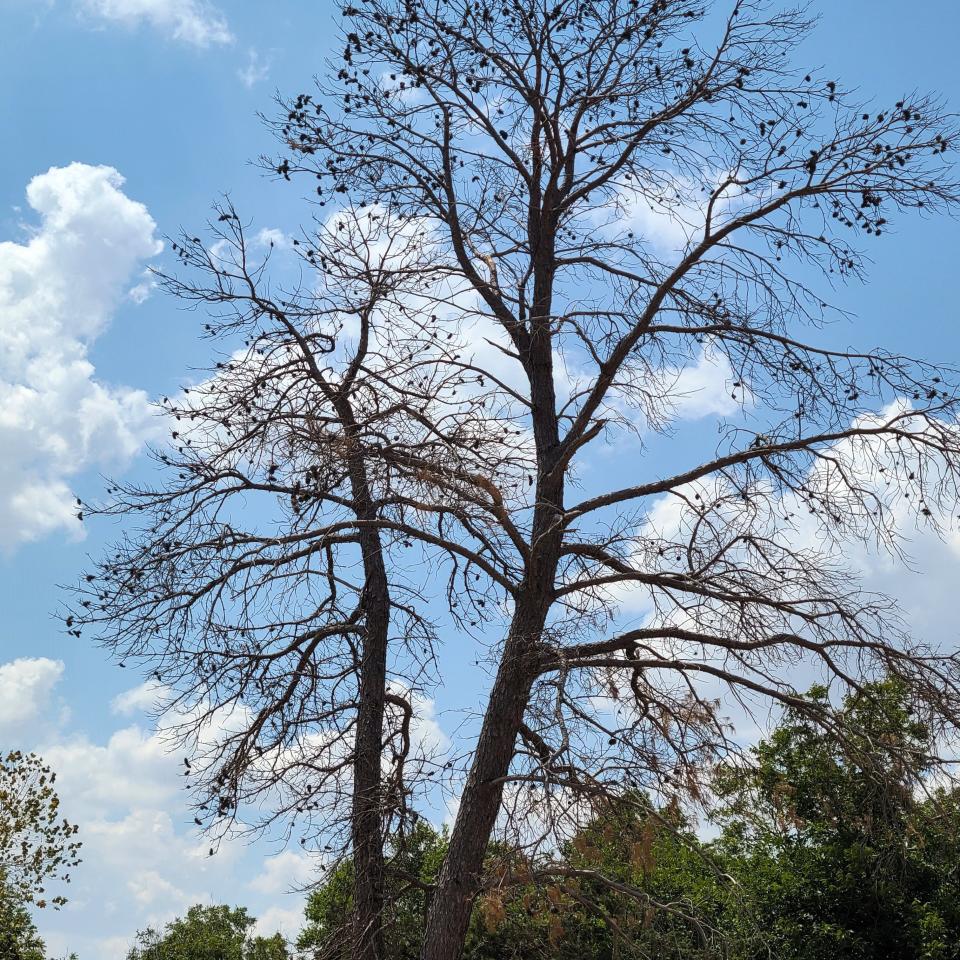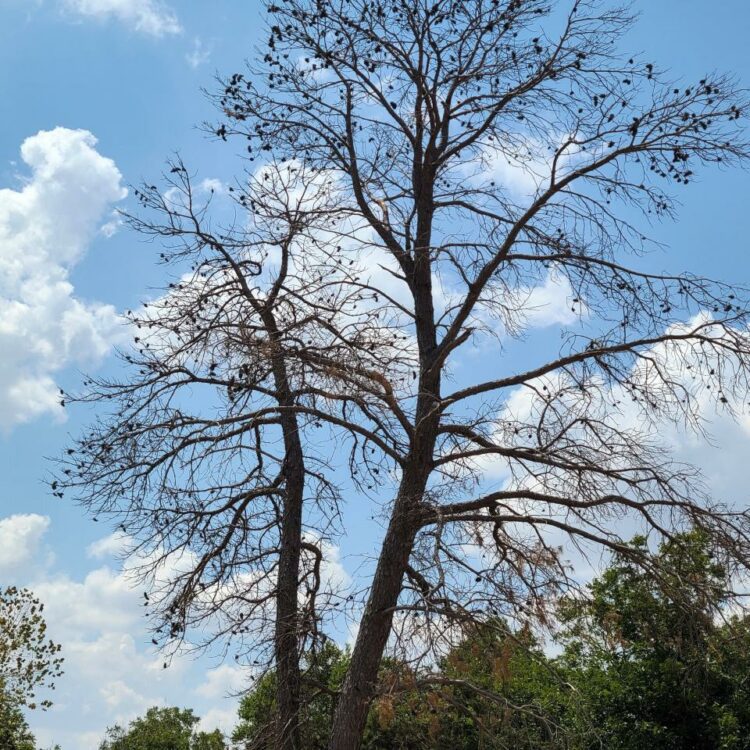Texas is prone to periodic droughts, and Wichita Falls and the surrounding areas have suffered tremendously in the past two decades. This summer has been hot and exceptionally dry, following a summer that was even more dry in 2023.
Yet we are not a desert area. We are right on the border of the West Texas desert but not too far from areas further north, east, and south that receive more rainfall.
Our average annual rainfall puts us in a semi-arid zone, meaning that we can plant more than cactus. We need trees to beautify our property, provide shade to protect us and our homes from the hot sun, and for fruit and nuts and other benefits.


A large East Texas pine in Wichita Falls that has succumbed to drought conditions.
As you drive through our neighborhoods, there’s no doubt that the most desirable blocks are those with mature trees.
But at the end of one of our periodic droughts, we notice too many dead and dying trees. I have made a non-scientific study of which trees are performing well and which ones suffer the most from extreme drought.
The number one type of dead tree I’ve spotted in my drives through the city is the slash pine or East Texas pine. Yes, this is a native Texas tree. But we all know that East Texas is a whole ‘nother country when compared to our part of Texas.
East Texas pines have a fibrous, shallow root system. When they are part of the piney woods, with many other pine trees around, they protect each other with a layer of pine needles and shade over their roots.
When just one or two are planted in our hot, dry yards, they miss out on those benefits. Since their roots are close to the surface of the soil, they tend to cook when we have weeks of 100-degree temperatures. It seems that no amount of supplemental water can save them.
And once they have been stressed by dry conditions, the larvae of various beetles bore into their trunks and eat out the wood, interrupting the flow of water through the trunk to the rest of the tree. The borers combine with drought to become a death sentence.
Yes, they are beautiful, majestic trees. But they should not be your first choice.
If you want a pine tree, the Afghan pine (also known as Mondell or Eldarica) is much better suited to our climate. They can withstand drought, alkaline soils and extreme heat and cold. While they won’t get as tall as the East Texas pine, they are a good addition to your landscape.
And if you want a good shade tree, the ones that, by and large, are doing well even during this drought year, include:
Live oak (Quercus virginiana)
Shumardi red oak (Quercus shumardii)
Bur oak (Quercus macrocarpa)
Cedar elm (Ulmus crassifolia)
Chinese pistache (Pistachia chinensis)
All except the pistache are native to this area.
Of course, there are others, including a number of smaller or ornamental trees, that do not provide shade but are worthwhile trees. These include the larger crape myrtle varieties, Vitex, several redbud varieties, desert willow and even the Little Gem Magnolia.
Fall is the very best time to plant new trees in our area. Take a look around and see how different trees are faring in your neighborhood. Then choose some good ones to make your home more livable and more valuable.


Katherine Smith
Katherine Smith is part of the third generation of the family to operate Smith’s Gardentown, which is celebrating its 75th anniversary in 2024. The business was started by her grandfather, C.O. Smith, and father, Curtis W. Smith. Katherine and brothers Steve and Doug worked in the business and took over after Curtis’ retirement. Her son, Michael Fiore, is now the chief operating officer of the company.
This article originally appeared on Wichita Falls Times Record News: Smith: Droughts show us which trees have staying power
Source link : http://www.bing.com/news/apiclick.aspx?ref=FexRss&aid=&tid=66e6dd74bf5643dca103211e9f679c67&url=https%3A%2F%2Fwww.yahoo.com%2Flifestyle%2Fsmith-droughts-show-us-trees-120039952.html&c=6731643458630836625&mkt=en-us
Author :
Publish date : 2024-09-15 01:00:00
Copyright for syndicated content belongs to the linked Source.
